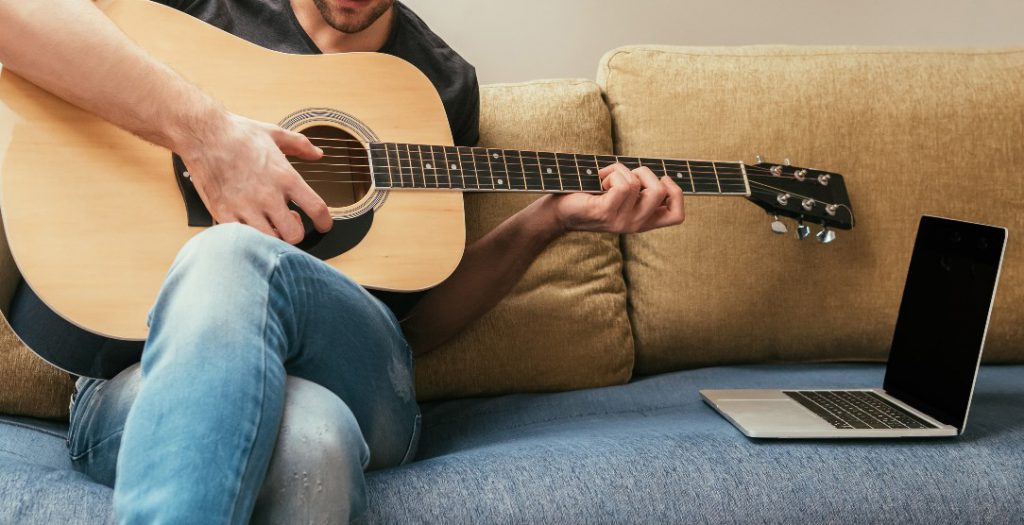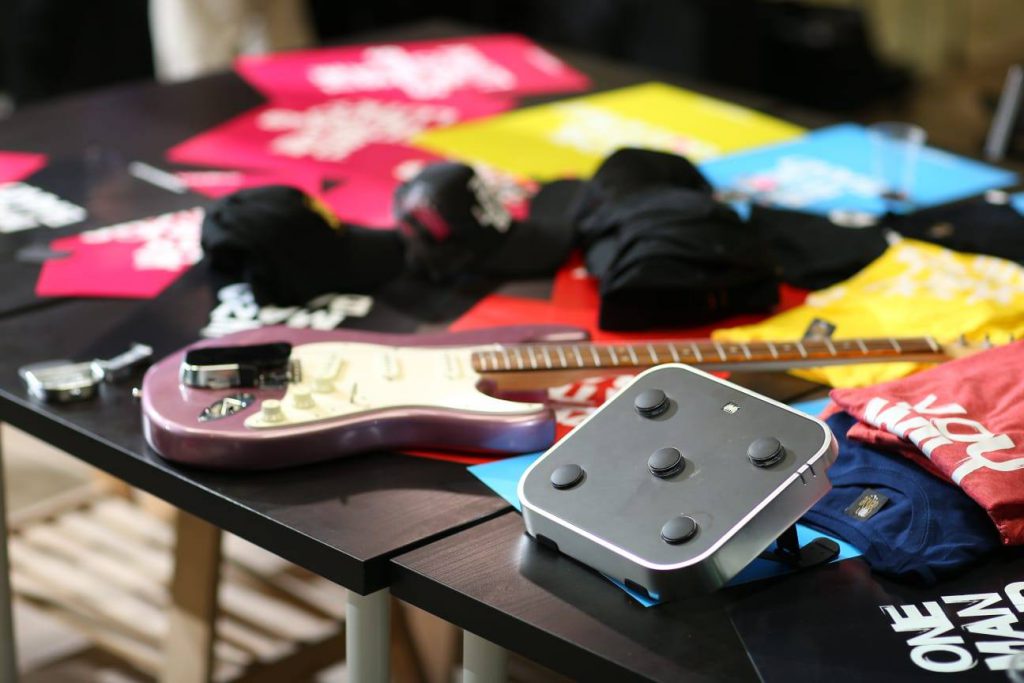
A while back, a musician friend asked us if we’ve heard of a new high-tech guitar called OMB. This new tech is supposed to “suit you with a live backtrack that will respond to your playing”, as appears on OMB Guitars’ official website. But does it really do that?
As you should know, usually when someone says the words “guitar” and “high-tech” in the same sentence, you are most surely to get disappointed. This kind of technology has never delivered quite what it promises, and most of us just felt disappointed.
Nevertheless, after a quick check up on Google about the OMB guitar, we learned that this cute device has sold thousands of pieces on Kickstarter and received quite favorable reactions on YouTube and other social media. We had to check it out.
How does it work?
The OMB itself – short for One Man Band – is actually quite a small device attached to your guitar. This clever device can sense and analyse where your fingers are by measuring resistance over the strings. This data is then transformed into MIDI signals and transferred to the OMB app that analyses it again to detect what chord you are playing in real time.
When we read online about the OMB device, the first thing that caught our eyes was this “real time” promise. For years, we have struggled with MIDI guitars, having some disturbing latencies when generating sound. The OMB does not use the pickup signals to generate MIDI – as all other MIDI guitars do – this became a non-issue here. Yes, the OMB guitar has no latency that any of us could feel.
But what about the main promise of this device? Does it create a convincing, full-sized backing track that suits our playing?

Does it deliver?
In short, yes. When playing a chord, the app immediately detects it and shows the chord’s name on the screen. When clicking “play” on the app (OMB also has a foot pedal for more intuitive and free playing), the backing band goes in with a bang! It didn’t matter if we went for a blues classic or jammin à reggae beat, the OMB produced a tight, clean cut virtual band for us.
You should note that whilst the genre and playback BPM have to be picked in advance, you can control it during playing with the foot pedal. The pedal can also control other variables like what instruments will be present, muting some of them whenever you want to and even inserting drum fills to spice up the playback itself. The guys at OMB have clearly thought about this thoroughly to create a real-sounding playback and not a cheap karaoke-like one.
The Sound Packs
So far, the OMB device is indeed more than we expected. But for us musicians, the most important thing is the sound pack quality, and the guys at OMB haven’t fallen short on this one either. The OMB original app comes with a basic sound pack that doesn’t sound too bad at all. You can also connect it freely to almost any other sound pack you have, meaning the sky’s the limit.
OMB also works perfectly with another app called Xmure, where OMB users get 10 additional sound packs for free when using your OMB guitar for the first time. And boy, these are a real treat.
One thing that can most certainly be said is that when you use the guitar for the first time – it really opens your mind musically and is definitely surprising. Whether you have been playing for just a short while or for very long, whether on open stages, large platforms or at the leisure of your own home – this is a different experience, an experience that makes the penny drop and causes even the most experienced of guitarists to raise an eyebrow.
Anyway, that is what happened to us and to all the guitarists we let try the device. When the first accompanying sounds were emitted – an expression appeared on their faces which can be defined as surprised and impressed – head nodding, eyebrows raised, lips sealed.
The OMB product is definitely innovative and revolutionary, but it also has drawbacks that you should know about:
Extra Features
- A unique mode called Solo Mode, which can be operated by a small button on the side of the device, or using the app and pedal, which allows using the guitar as a synthesizer. This means that the sound is not converted into sounds of an accompanying band, but is emitted through the type of sample selected, such as violin or piano. This way the guitar can emulate the sounds of almost any musical instrument.
- The app that accompanies the device is easy and intuitive to operate
- The app presents the chords being played in real time and can record what you are playing.
- The device can be smoothly connected via Bluetooth or USB cable to any MIDI component, module or plug-in on the market, so that it is absolutely versatile and flexible
- Suitable for use with most acoustic and electric guitars (including a welcome adaptation to left-hand guitars)
- The app or pedal can be used to define the genre, the speed and the instruments participating in the accompaniment, at every given moment
Room for Improvement
- No iOS – no party – as said, the guitar can be connected to all MIDI platforms, app and sound modules. It is important to note that the OMB app that provides orchestral accompaniment exists at present only for iOS users.
- Amplification – the device is not amplified by itself, therefore it needs to be attached to an amplifier. However, at all times it is possible to play through a telephone loudspeaker.
- Solo Mode – in this playing mode, the digital sound will not recognize playing on open strings, playing velocity and bending.
In summary
The OMB device provides a completely new playing experience for both professional and amateur guitar players. It can suit any type of guitar, any playing style and all musical genres, and is suitable for home use, on stages and on open air platforms.
We believe that most guitarists, after using it for the first time, will indeed raise an eyebrow and be surprised, even if they have many and rich years of experience playing on their own or in a band. This is because it provides the experience of playing with a full band even in a stark surrounding and makes practising, composing and playing much more fun.
Despite being innovative, professional and interesting, it still has room for improvement, and at this stage is suitable for iOS operating systems only. In addition, it has to be connected to an amplification system if you want the full experience of what it offers and make the most of it.
The device is available in two forms: as the guitar on which it is assembled, if you don’t want the hassle, or as a kit for DIY assembly on a guitar of your own – a very good option for experienced DIY’ers.
For more info and model list, check out OMB Guitars’ website and online store – ombguitars.com



